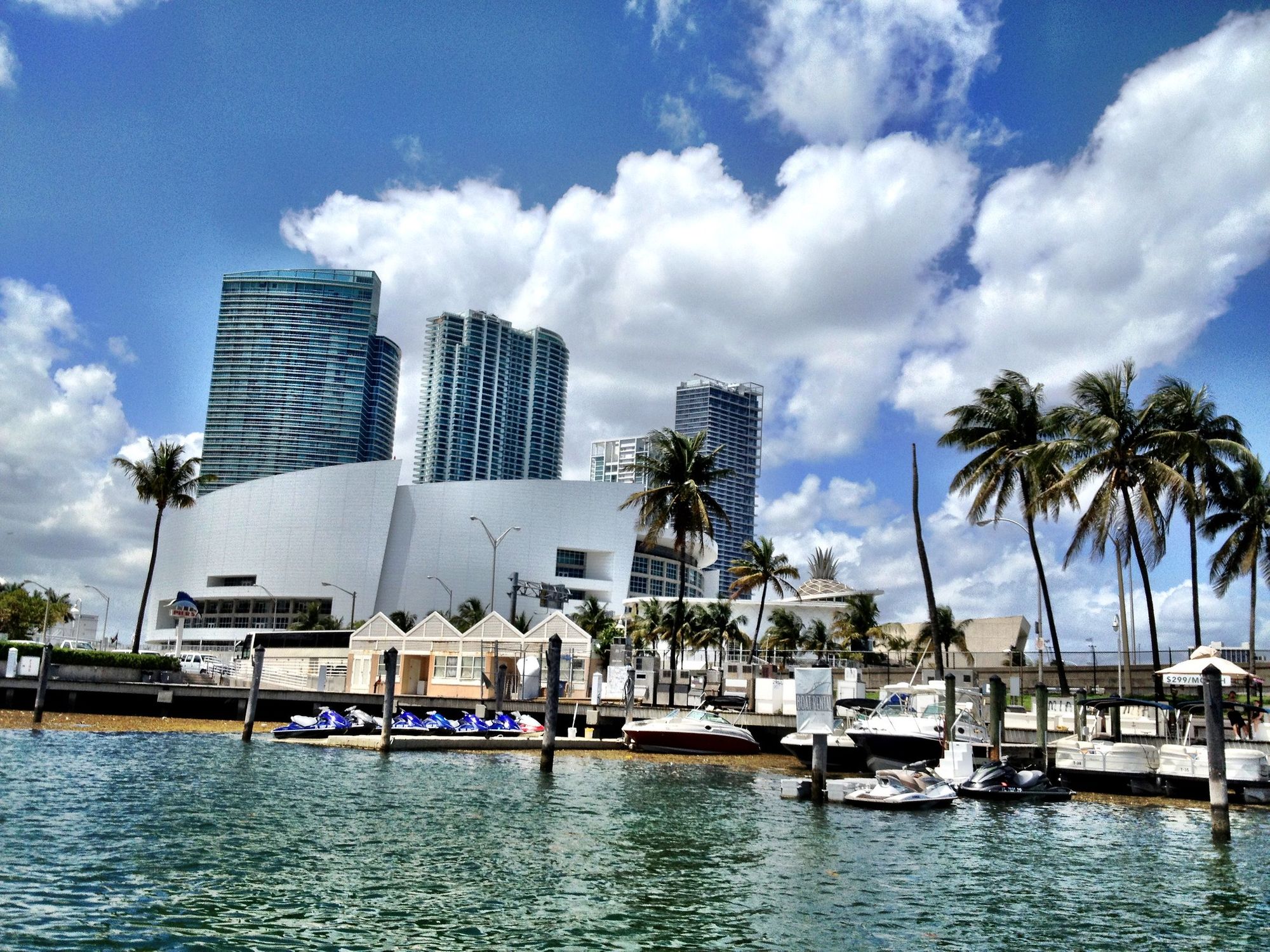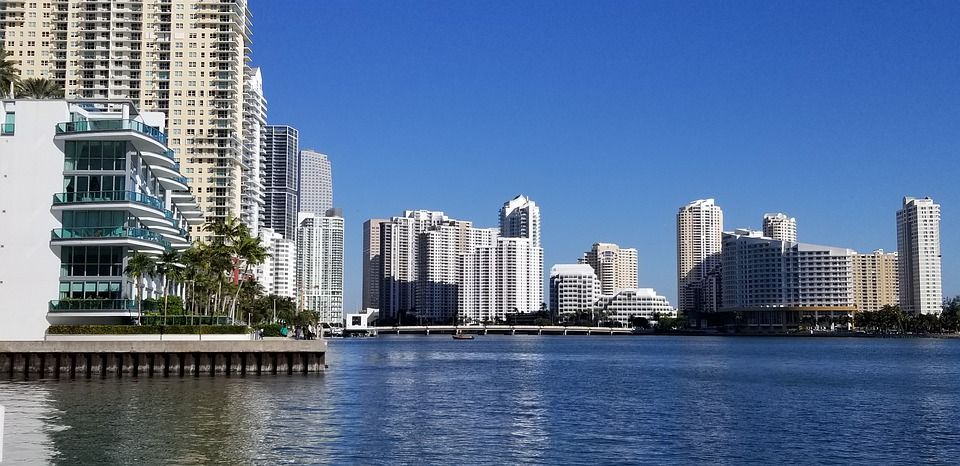In Florida, Suspending Belief in the Glare of an Invading Sea
Miami agents have especially shown a high level disregard for the threats facing the region—even as experts tell homeowners to sell their properties now to avoid losing everything in the face of climate change.

In the last decade, Florida has been in denial about the effects of climate change (especially at the state government level). This is dangerous for a region that has experienced 40% of the hurricanes the US has seen in the last 167 years. The recent approval of the legislation SB 178 in the House and in the Senate marked an important shift in the state’s history.
Under the new legislation, the government will no longer spend money on construction projects in coastal zones unless studies prove that the project will be safe from rising sea levels. Although many analysts agree that Florida is already late on climate-change-related action, this suspension of decade-old willful ignorance on the impact of global warming may be a catalyst for broader changes.
Some of the changes climate enthusiasts expect to see include legislation that will also prevent the development of private properties in coastal areas. Miami agents, most especially, have recently demonstrated a high level of disregard for the threats facing the region—even as experts tell homeowners to sell their properties now to avoid losing it all in the face of climate change.
A recent undercover report showed that Miami agents were either ignorant about the dangers of climate change or feigning ignorance about the topic when dealing with a potential buyer. The booming construction is only taking the most basic measures against the invading seas, and most of the agents believe that the state is adequately prepared to tackle climate-change-related problems. Some of the erroneous beliefs they hold include:
- The raised streets buy Miami another 50 years without any major disaster.
- The pump stations will stave off flooding for as long as necessary.
- Amsterdam solved the problem of flooding, so Miami will do the same.
- Climate-change damage is 100 to 200 years away.
With such beliefs, it will take more than the legislation SB178 to fully prepare Florida for the dangers ahead.
Florida and the rising sea
Climate change has made Florida one degree warmer over the last century. It has also led to more severe rainfalls, and the sea levels are rising at about one-inch per decade. Over the next few decades, the increasing temperatures will cause more storm damage, harm coral reefs, and increase the number of uncomfortably hot days in the area per year.
Florida has five of the 20 urban areas in the US that will suffer the most impact from the rising sea. These include Miami Beach, Miami, Panama City, St Petersburg, and Tampa. A 2016 report predicted that Florida will lose $413bn by 2100 as one in eight homes will be underwater.
A Miami-Beach-specific study showed that even if there are concerted efforts to reduce carbon emissions, up to 6.6% of the Miami Beach housing market could be underwater by 2050—just thirty years away. By the 2100 mark—just 80 years away, 56.8% of the property market in the area will be underwater even with some cuts to carbon emissions. Without any cuts, the statistics are a lot grimmer, with 85% of the housing stock lost.
It is, therefore, deeply concerning that property developers across Florida are ignoring these studies and erecting new developments with each passing year.
Hurricanes and tropical storms

In the last 40 years, the number of homes in Florida has increased by roughly 100% to five million. Developed land has also increased by 150%. Of the total 19.6 million people living in Florida, roughly a massive 76% of them are living in coastal areas. This means that with the rising threat of global warming and how it is impacting hurricanes and tropical storms, nearly 80% of Florida’s population are putting themselves in harm’s way.
Climate change causes more regular tropical storms with higher intensity, leading to more rainfall. Additionally, tropical storms now have a slower landfall pace compared to the last few decades. This has led to much higher precipitation, and thus, areas affected by hurricanes and tropical storms have seen up to 60 inches of rainfall. This was the case with Hurricane Harvey in 2017 which led to an estimated $125 billion in damages.
So, building in places prone to big storms and hurricanes is akin to intentionally exacerbating damages and loss of lives every time a major storm hits. Although global warming is making storms and hurricanes more powerful than ever, the main cause of the disasters that follow these events is the distribution of population and development in the area.
Miami, the most vulnerable coastal city

According to new research, the next two decades could be the most disruptive for Florida’s 8,500-mile coastline with Miami officially becoming the most vulnerable amongst the coastal cities. The report shows that by 2040, the seas would have gained between 8 and 12 inches in elevation.
With many of Miami-Dade County’s population living less than three feet above the current water levels, the region is highly at risk of heavy flooding. The city will contribute a significant portion of Florida’s expected loss of $145 billion in real estate value.
Real estate boom
Despite the threat of climate change and the gloomy forecasts, real estate in Florida’s coastal areas is still booming. In Miami’s urban centers, there are more than 20,000 units of housing that are in various stages of completion. In the Brickell financial district, which is one of the hottest neighborhoods in the area, around 6,000 units of housing have been recently completed or nearing completion.

Investors from around the country are still trooping in daily for inspections and purchase decisions. Yet property managers and property tour operators say that the clients are not concerned about climate change and the rising sea-levels. The general feeling is that investors are not looking far ahead into the future, but they should be.
Florida is enforcing elevation requirements and strong building codes. The stormwater master plan is supposed to remain resilient until 2060, but at the current pace of rapid global warming and its attendant effects, these measures may come up short in the end.
Climate change impacts on law and policy in Florida
Although Florida is lagging behind in the fight against climate change from a law and policy perspective, it has not entirely ignored the changes over the last few years. In 2006, the governor at the time, Jeb Bush, signed the Renewable Energy Technologies and Energy Efficiency Act into law. This saw the creation of the Florida Energy Commission. Other policy changes include:
- Governor Charlie Crist’s 2007 executive orders aimed at reducing greenhouse gas emissions statewide.
- The HB 7207 bill of 2011(PDF) which focused on overhauling the growth management policy.
Florida counties unite to prepare for climate change
Florida cities and counties have united to tackle climate change. Some of the actions they have taken so far include the following:
- Orlando has expressed commitment to ensure complete reliance on renewable energy by 2050.
- Miami-Dade County intends to achieve a 30% tree canopy cover by the end of 2020 through its “1 million trees” plan that began a few years ago.
- Tampa Bay launched the Regional Resiliency Coalition in 2018 to tackle climate change through collaboration.
- St. Petersburg is on the front lines taking action to reduce carbon emissions and conserve energy.
However, key players in the region feel that the actions are not nearly enough. According to St. Petersburg mayor Rick Kriseman, the region is “still playing catch-up” and must do more to prevent rising sea levels in the future.
The absence of adequate action on climate change at the Federal and State levels makes more local action more important than ever.
Conclusion
Across various levels, Florida is taking meaningful strides to prepare for climate change and mitigate its impact in the future. However, the level of threat the region is facing is yet to sink in across the region. The seriousness of these risks requires far more action today, including more policy changes, to avoid the worst impacts.
Remember, even a minor cut down in emissions could be the difference between losing around 56% or 80% of the region’s housing units to flooding over the next 80 years. The legislation SB 178(PDF) is a good start in the right direction, but as long as the construction of condos by the sea is allowed to continue, it is only cosmetic.
The climate is changing significantly, and building houses in storm-prone areas today is putting more Floridian lives at risk unnecessarily. The government needs to enact policies that will end these risky constructions while pushing for more climate-change legislation that will protect existing lives and properties in the area.
Augurisk is an innovative platform for climate change risk assessment. We also offer assessments for natural hazards and societal risks. Is your home or business at risk? Get a free risk assessment at Augurisk.com.
